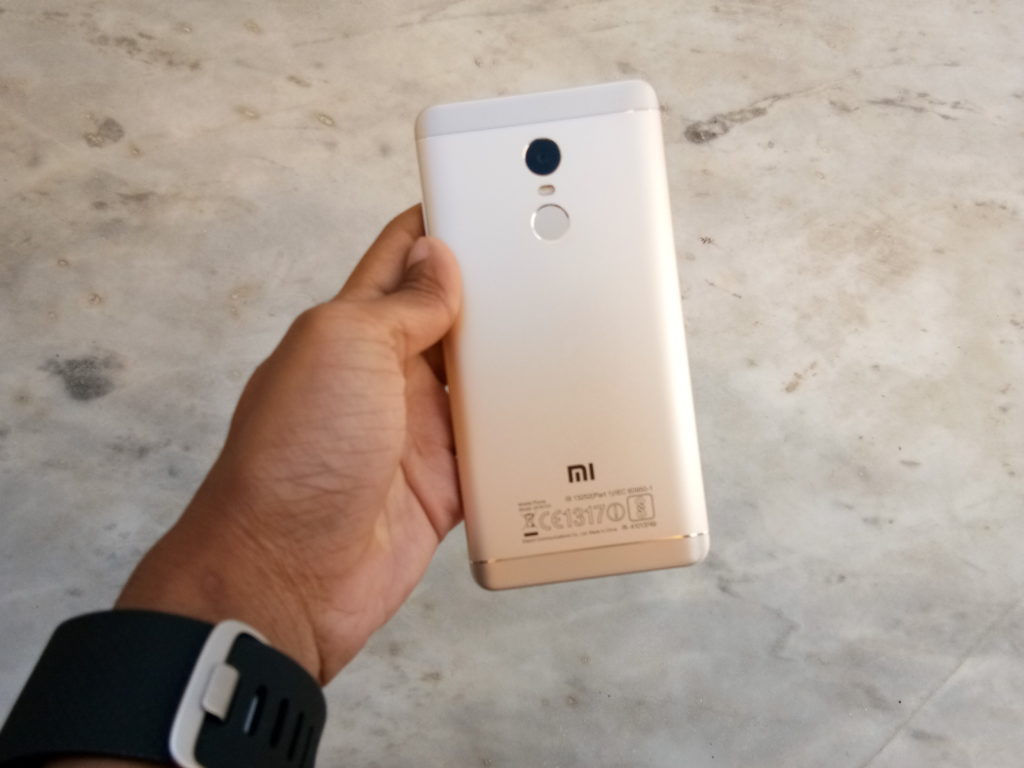Redmi Note 4 carries forward the legacy of its popular predecessor!
Xiaomi Redmi Note 4 is the newest entry in the budget range. And just like its predecessor, it has created a huge buzz in the Indian market. The USP of the smartphone is up to 4GB of RAM, Snapdragon 625 SoC and up to 64GB of storage at just Rs 12,999. I have the 4GB RAM variant with me for the review. Let’s check out if the Note 4 can carry over the popularity of its previous iteration.
Build and Design
Xiaomi Redmi Note 4 is almost similar to its predecessor Xiaomi Redmi Note 3 in terms of the design. It has a full metallic body, although the edges are now curvy. The rear panel is bit slippery but feels comfortable to hold. The size and weight of the smartphone is good enough to be used with a single hand easily.

The rear panel has Mi logo in the middle, and the camera module is at the top panel just below the antenna lines. The LED flash and fingerprint scanner is just below the camera. The front panel holds a proximity sensor and camera at the top of the display while the capacitive touch buttons are below it.
The 3.5mm audio jack is on the top while the microUSB port is situated at the bottom along with the mono speakers. The power button and the volume rocker keys are on the right side of the edge. The SIM card tray is on the left side.
Display
The smartphone offers 5.5-inch FHD IPS display with the resolution of 1,920 x 1,080 pixels with 2.5D curved glasses. The display provides good contrast and sharpness. Colour reproduction is also good, and the display can be seen under direct sunlight quite easily.
Hardware and Software
Xiaomi Redmi Note 4 houses an octa-core Qualcomm Snapdragon 625 Chipset clocked at 2GHz. The processor is further supported by 4GB of RAM and Adreno 506 GPU for graphics. There is 64GB of internal storage and can be further expandable up to 128GB via microSD card.

It is a Dual-SIM smartphone with Hybrid SIM card slots (micro + nano / microSD), with both the slot supporting 4G VoLTE. It runs Android 7.0 Nougat with company’s custom MIUI 8.0 on the top of it. The UI is clean and offers good customization features. There is no additional bloatware except some of the UI own apps. The smartphone offers 54GB of free space and mostly 2.7GB of free RAM to the users.
Performance
The smartphone handles everything which is thrown at it with ease. The touch response is quick and it also multitasks smoothly. I ran several apps along with some games and several tabs on Chrome, and I was able to switch between the apps and tabs without any lag.

The gaming performance of the smartphone is quite good, and it handles high-end games like Modern Combat 4 and Asphalt 8 without any lag. There was no heating issue with it while playing games.
The benchmark performance is pretty good, and it scores 61,995 in AnTuTu. In Geekbench its scores 826 in the single core test while 2,696 for multicore. The scores aren’t the best but we can’t just judge on virtual numbers over the real performance. Last year’s Redmi Note 3 was having Snapdragon 650, which is slightly more powerful. While this is the reason for the scores to be less, overall performance is quite good in case of the Note 4 too.
The fingerprint response of the smartphone is impressive, and it unlocks the smartphone within a second. Talking about the connectivity options, dual-band Wi-Fi 802.11a/b/g/n, Bluetooth 4.1, USB OTG, FM radio, GPS/ A-GPS, Miracast, GLONASS, and BeiDou. 4G VoLTE works fine, and there was hardly any connectivity issue.
The music and video playback quality is also superb. It supports 1080p videos and gives great video performance. The audio output along with the video work fine in headphone as well as in open surrounding.
Camera
Xiaomi Redmi Note 4 sports a 13-megapixel rear camera with f/2.0 aperture, PDAF (phase detection autofocus), and a dual-tone LED flash. The company has improved the camera performance as compared to its predecessor. The camera focuses quickly and shoots images with great details. Images have a good amount of details, sharpness, and colours. The low-light performance is also decent but we expected it to be much better.

There is also a 5-megapixel front-facing camera with f/2.0 aperture and a fixed-focus lens. It captures great selfies which are vivid and have details. There are lots of modes available in the camera app as per the users need as well as lots of filters. The camera app is user-friendly and gives users a lot of customization modes.
Battery
The 4100mAh of battery runs a lot. It gives around a full day backup with heavy usage and around two days with minimal usage. In continuous video loop test, it gives around 16 hours of playback timing. The battery performance is excellent. Apart of it, the company also offers battery saver mode, which saves the battery efficiently and increase the standby time.
Gizmo-verdict
At a price tag of Rs 12999, Xiaomi Redmi Note 4 is offering great specifications and impressive performance. It has good battery life, great performance, desent camera and premium design at budget cost. Additionally, you can opt for its lower-priced variants with 2GB RAM and 32GB storage for Rs 9,999, or 3GB RAM and the same amount of internal memory priced at Rs 10,999, if you feel the 4GB RAM model is pricier. Overall, if you want a VFM smartphone in this budget, you can definitely go for it.


It runs on Android N ?
currently not, but it will get soon